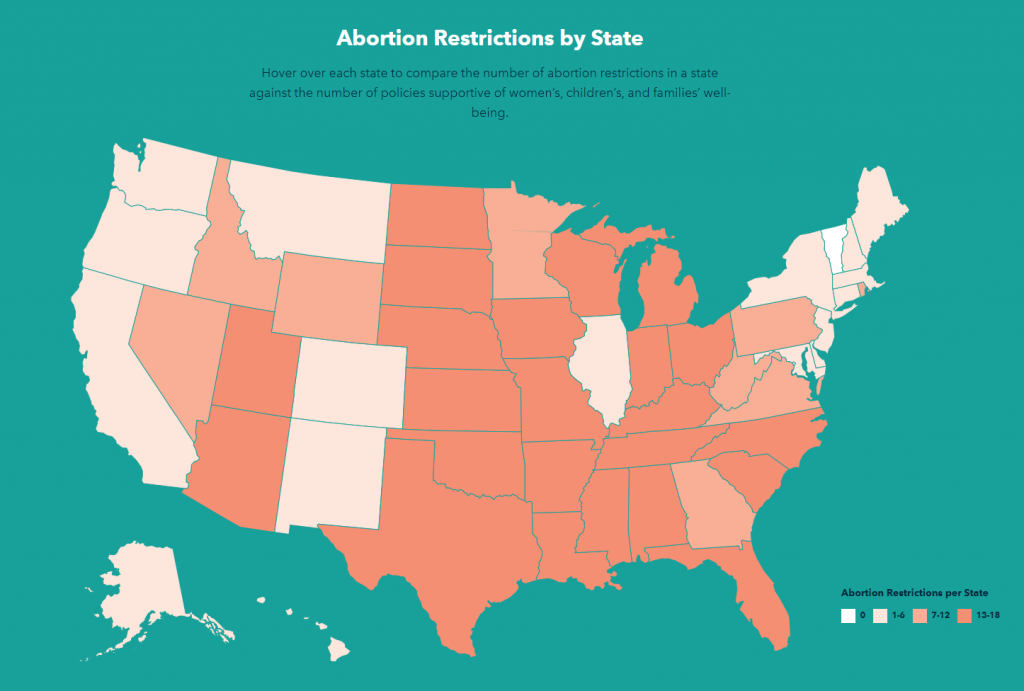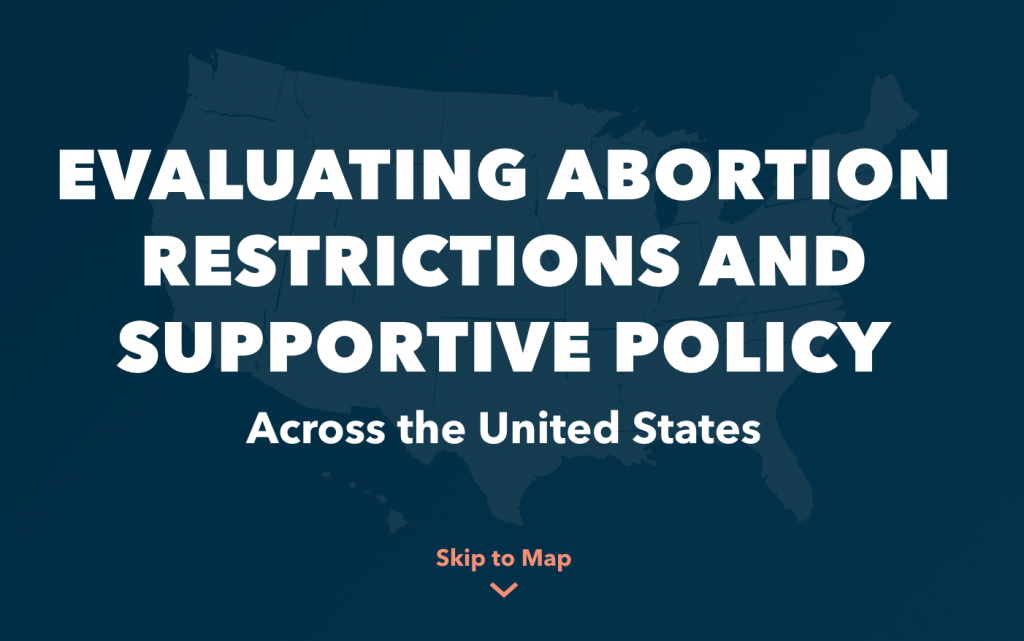Are there any standout examples from the findings that you would like to highlight?
In states where restrictive abortion policies make it harder for people to make choices about their pregnancies and to access abortion care, we also see that there are fewer policies in place that could support individuals and their children before and after pregnancy. We know, for example, that policies that increase Medicaid eligibility limits for pregnant women have been shown to increase health care coverage of pregnant women and reduce infant mortality and low birth weight. Yet none of the three states with the highest number of abortion restrictions have increased Medicaid eligibility limits for pregnant women or expanded family and medical leave beyond federal requirements. If those policies are not in place- then we don’t see the resulting benefits for pregnant people and children’s health outcomes.
How can the Evaluating Priorities data be useful in policymaking conversations, in your opinion?
For policymakers seeking to ground their initiatives on evidence, the data from Evaluating Priorities gives them ready examples of how abortion restrictions negatively impact people’s lives and conversely examples of policies that actually support the wellbeing of women, children, and their families. Evaluating Priorities provides the tools to start a conversation about shared health and policy priorities, and work toward a proactive, evidence-based agenda that promotes health.Further, policymakers are able to point to states that have more robust supportive policies, and utilize them as models for legislation.
What is included in the Evaluating Priorities interactive website that policymakers can use?
Policymakers may use the interactive map to identify how many abortion restrictions and supportive policies are present in their state as well as to see how their state compares with others in their region and nationally. Policymakers can also view and download a factsheet for their state, which includes details on the state’s restrictions and supportive policies and a summary of how the state ranks in these areas. Importantly, for each indicator included in our analyses, we highlight evidence on its impact as well as the data source for that evidence, which can be used to explain the negative impacts of abortion restrictions and advocate for proactive evidence-based policies that have been shown to improve health outcomes. As an example, one of the abortion restrictions included in the analysis is ambulatory surgical center standards imposed on facilities providing abortion. This restriction can result in clinic closures, limiting access to care, but it could also increase the cost of care, which can further impede access. Finally, the site also includes a page that offers main takeaways from the analysis, frequently asked questions, and additional resources.
Finally, Dr. Thompson, as a quantitative and qualitative researcher, how have seen the policy disparities in Evaluating Priorities impacting people on an individual level?
Amidst a pandemic, the deep inequities in our health care system are more visible than ever. Instead of supporting families during a pandemic and economic downturn, policymakers have continued to pass abortion restrictions and further deepen inequities. When the pandemic hit, some state officials moved to restrict and limit access to abortion care—an essential healthcare service—during their executive responses to mitigate the spread of COVID-19. The same states that imposed these restrictions also tend to have the highest numbers of abortion restrictions and the fewest supportive policies in our analysis. Restrictions under the pandemic caused a range of confusion across states as providers moved to cancel appointments and patients were forced to drive across state lines to receive care or potentially not receive any care at all. The reality is that when it comes to sexual and reproductive health care, we know that people of color, including Black and indigenous communities, are most impacted by restrictive state laws when they decide to end a pregnancy. These inequities are created at the state level, and efforts to overcome them must begin by holding state lawmakers accountable. Abortion restrictions, and policymakers who choose to prioritize them over supportive health policies, place pregnant people’s immediate and long-term well-being at stake. Investing in reproductive health—by implementing policies that support it, and abolishing policies that restrict anyone’s power to exercise their human right to live a pleasurable, safe, and healthy sexual and reproductive life—needs to be a priority.
Contact Information:
Terri-Ann Thompson, PhD, Ibis Reproductive Health, [email protected]
Nimra Chowdhry, JD, Center for Reproductive Rights, [email protected]
|





